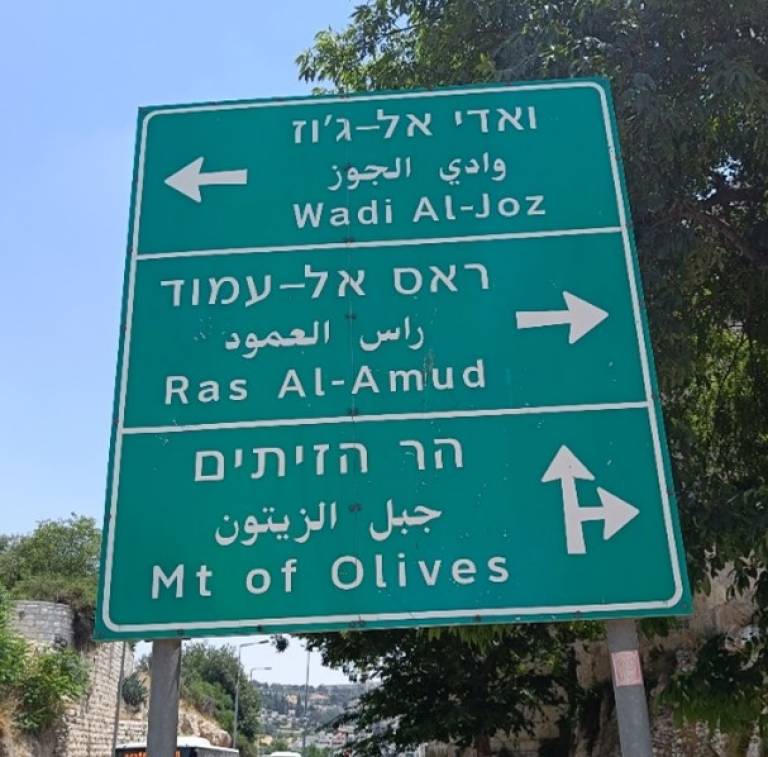Student Ben Chan visits Israel & Palestine with support from Ancient History Middle East Travel Fund
28 June 2022
We spoke to UCL History student Ben Chan about his recent research trip to Israel and Palestine, which was funded by the Middle East Travel Fund.

Tell us a little about your trip which was financed by the Ancient Middle East Travel Fund...
The Ancient Middle East Travel Fund allowed me to travel to Israel and Palestine for a few days. I arrived at Tel Aviv airport on Monday evening, and travelled to Jerusalem. I spent time on Tuesday visiting many sites – some with religious significance, and others that were purely historical. That day saw me walking over 40km between different historical sites, which is testament to just how many places of historical interest there are in this ancient city. Wednesday saw me cross the separation barrier for a trip to Bethlehem, in Palestine. This was a culturally enlightening experience and gave me a deeper understanding of the modern political issues of this region. On Thursday, I took a journey to the Judean desert to visit the Dead Sea and Masada – an ancient hilltop fortress that was the site of the Jewish rebels’ last stand against Roman troops in 74 CE. On Friday, I went back to Tel Aviv airport for my return flight to London.
Why did you choose this location?
I decided to visit Israel, and Jerusalem in particular, because it is a city filled with so much history. Being a place of incredible significance to three of the world’s largest religions, it wasn’t hard to find places that piqued my historical curiosity. As a Christian, it was also an incredible opportunity to explore some of the biblical sites so revered for their association with Jesus Christ.
Outside of this, I was keen to gain a more developed perspective on the modern politics and controversies of the region, and listen to first hand stories about how this affects daily life.
The chance to try new foods and be immersed in a new culture was also something that drew me.
What did you learn when you were there?
I originally intended to find examples of Roman administration allowing local culture and religion to continue unencumbered during Jerusalem’s occupation. This would have been in contrast to Roman occupied Britain, for example, where the use of Latin and Roman ways were quite strictly prescribed.
While I was there, however, I decided to research wider examples of Jerusalem’s cultural melting pot. This was inspired by a sign I saw which was in Arabic, Hebrew and English. It reminded me of ancient multi-lingual signs found in this region.
Throughout my stay, I saw how Jerusalem was a city with layers upon layers of different meaning. It is a place where different people apply different meanings to common space. Its status as a Holy City to people of many different religious backgrounds makes this even more tangible as one walks through the different quarters of Jerusalem’s old city – with the streets of the Muslim quarter being home to both Arabic cultural vibrance and also Christian religious significance with the Via Dolorosa running through it.
However, feelings of division between groups is also tangible. My Airbnb hosts, who were Jewish, described Jerusalem as “the most controversial city in the world”. This is evident in the tension that one can feel at holy sites such as Temple Mount, and also in the strong political sentiments expressed by the different people I met.
Clearly, since ancient times, Jerusalem has been a place of incredible cultural diversity and sometimes division. The story of the interplay between these different groups continues today.
What are your plans for the future?
As I go into my final year, I would like to continue looking at history from the different perspectives of the diverse peoples who made it.
This was an incredibly enlightening experience, and after my degree I would like to find work that allows me further opportunities to learn about and be exposed to new foreign cultures.
 Close
Close

